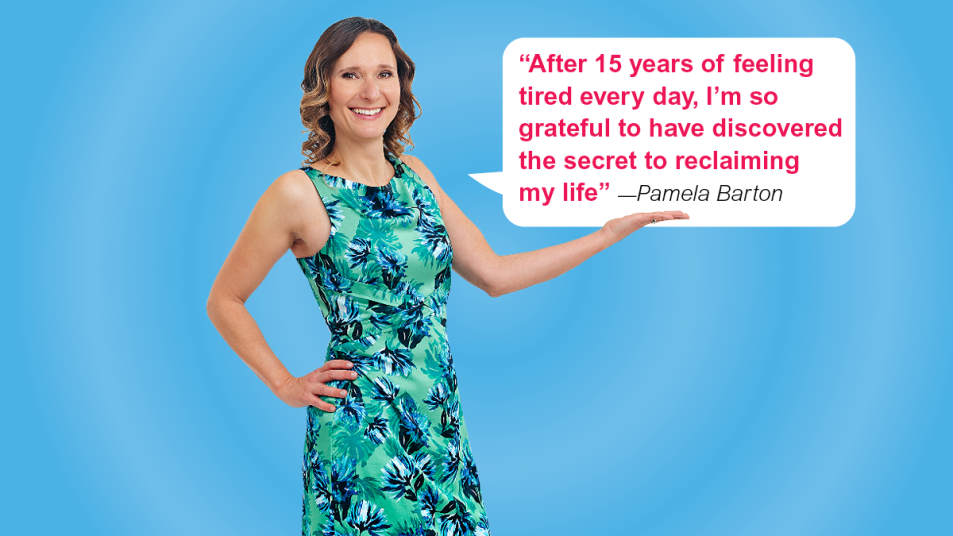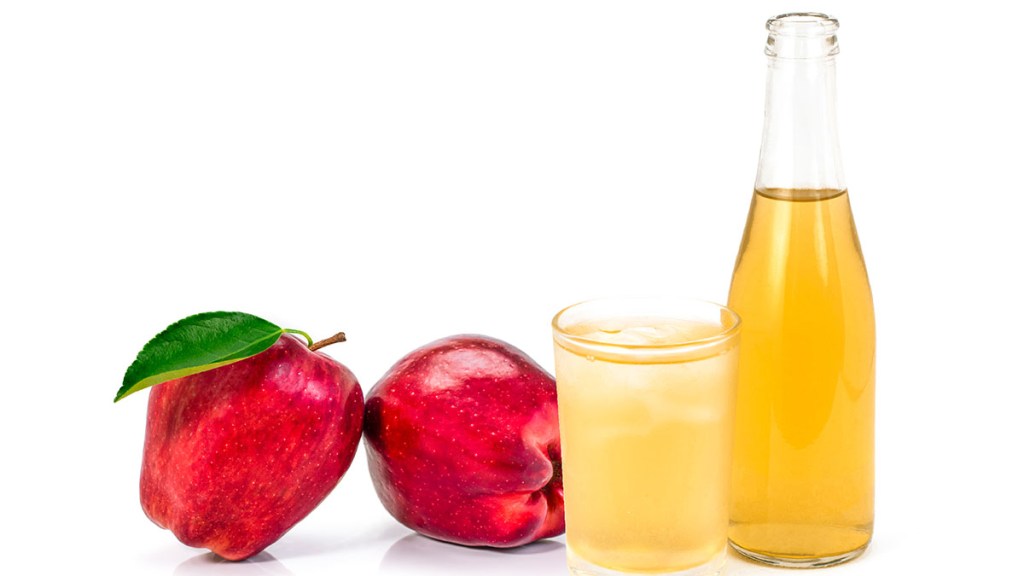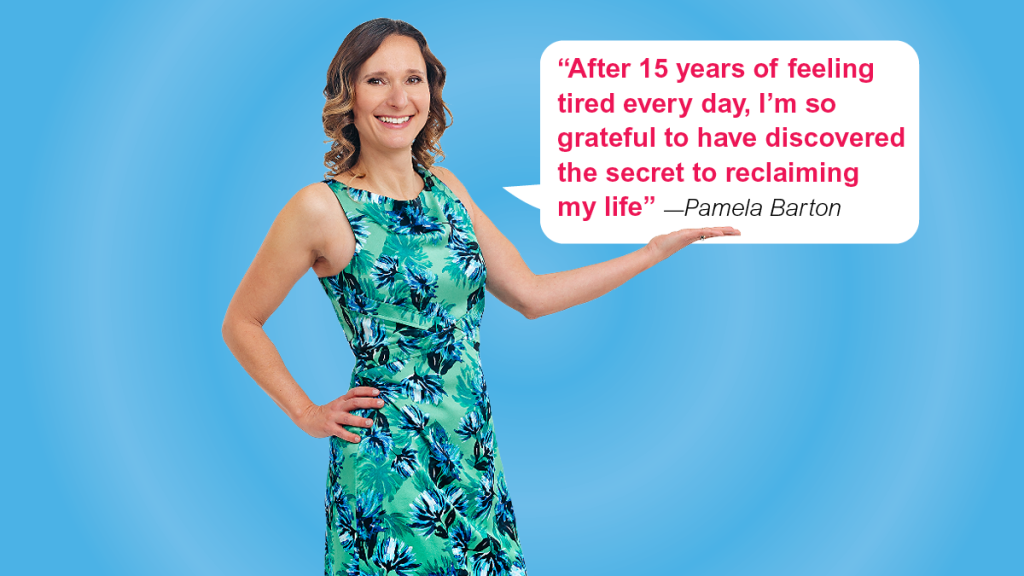MD: Your ‘Heartburn’ May Be Caused By *Low* Stomach Acid — The Easy At-Home Test and Cure
As many as 80 percent of older adults suffer from low stomach acid, which can cause hair loss, tiredness, GI upset and more

When bloat and indigestion hit, it’s logical to conclude you have too much stomach acid and to grab an antacid for relief. But experts warn that often the same symptoms that seem to signal too much stomach acid — a burning sensation in the chest and a sour taste in the mouth — are actually caused by too little stomach acid. Fortunately, there’s a simple at-home low stomach acid test to help you determine if you’re suffering. We asked top doctors exactly what’s happening with this often-overlooked problem and what to do to get quick relief. Read on for their answers — and discover how shoring up stomach acid helped one woman overcome fatigue and GI upset and restore her health!
What is low stomach acid?
The official term for low stomach acid is hypochlorhydria. As Jonathan V. Wright, MD, author of Why Stomach Acid is Good for You, explains, stomach acid (hydrochloric acid) activates a key digestive enzyme that breaks down protein and ensures the nutrients in our food are properly absorbed. “When levels of stomach acid are too low, the entire digestive tract suffers, so women experience symptoms like heartburn and gas that are easy to mistake as signs of too much acid,” he says. “Over time, nutrient deficiencies caused by inefficient absorption can trigger fatigue, fog, depression, weak nails and hair loss.”
Risk factors for low stomach acid
We’re more at risk as we age, notes Michelle Schoffro Cook, PhD, author of Pain Erasers. “Stomach acid production starts to drop off naturally, leading to shortfalls in as many as 80% of women over 40.” A small study of older adults in Norway confirms that 80% of women in their 80s and 90s suffer from low stomach acid. Other risk factors include chronic stress, eating very quickly and a high caffeine intake. Finally, anyone who has battled an H. pylori infection is at higher risk for low stomach acid.
What are the symptoms of low stomach acid?
As noted above, low stomach acid can ‘masquerade’ as high stomach, causing symptoms like burning in the chest and sour taste in the mouth, but it also has some symptoms of it’s own:
- Bloating and indigestion: Reduced stomach acid can lead to poor digestion of food, resulting in bloating and abdominal discomfort.
- Undigested food in your stools: You might notice pieces of undigested food in your stools, a tell-tale sign that there wasn’t enough stomach acid to break down the food.
- Chronic constipation or diarrhea: Altered gastric acid levels can disrupt the normal digestive process, leading to issues ‘transit issues’ like constipation or diarrhea.
- Nutrient shortfalls: Insufficient stomach acid can result in poor absorption of nutrients such as vitamin B12, iron, calcium, and magnesium. Deficiencies can result.
- Unexplained tiredness: Due to the inadequate absorption of essential nutrients, people with low stomach acid may experience chronic fatigue and weakness.
- Hair loss and brittle nails: Nutrient deficiencies arising from low stomach acid can lead to thinning hair, chipped nails and dark circles under your eyes.
- Increased risk of food poisoning: Having low stomach acid puts you at an increased risk of intestinal infections like bacterial gastroenteritis (food poisoning) and small intestinal bacterial overgrowth (SIBO).
- Nausea: Some individuals may experience nausea, especially after eating, due to impaired digestion.
Related: These Home Remedies Help Stop Burning Stomach Pain in Its Tracks, Doctors Say
How do you know if you have low stomach acid?
Doctors can diagnose low stomach acid with something called a Heidelberg test, which involves swallowing a pill-sized device to track acid levels. But the test can be inconvenient and insurance often doesn’t cover it.
Fortunately, there’s an easy way to determine if you suffer from low stomach acid and restore it, says women’s health expert Ann Louise Gittleman, PhD. The thinking here is that if you restore the hydrochloric acid (HCL) that you’re low on as well as an enzyme called pepsin, which helps in digestion and is activated by HCL, and your symptoms subside then you’ve discovered the problem and the cure in one fell swoop! Gittleman advises taking a 500 to 650 mg capsule of HCL and pepsin (Buy on Amazon, $23.99 for 100 capsules that deliver 648 mg of HCL per capsule) with a meal. If your stomach acid level is normal, you’ll feel a warming sensation like heartburn. If you don’t feel that warming sensation, your levels are too low. In other words, you have low stomach acid.
If that’s the case, Gittleman recommends increasing your dose to 2 HCL capsules at your next meal. If you don’t feel a warming with two capsules, add a third a capsule at each meal. Keeping increasing the number of capsules you’re taking at each meal until you feel the warming, then drop to the previous dose at your next meal. After four months, cut back by one pill a day until you no longer need it. Of course, it’s wise to check with your doctor before trying this test/cure: Betaine HCl isn’t advised if you have ulcers or take certain medications.
That’s all there is to it! “Correcting the natural decline in stomach acid helps restore energy and improve health,” promises Dr. Wright. “When you replenish stomach acid, you positively impact every organ in the body because every organ will be getting optimal nutrition.”
Related: MDs Reveal How Yogurt Can Calm Heartburn + The Stir-In That Boosts The Benefit
How apple cider vinegar helps restore low stomach acid

Another way to support the body’s natural acid production is with apple cider vinegar, says Gittleman. She advises adding 2 tsp. of apple cider vinegar to 8 oz. of water and drinking the mixture 30 minutes before meals. Natural acids in the vinegar lower the pH of the stomach, making it a better environment for digestion. Don’t like the tart-sour taste? Gittleman notes that it’s fine to add 1 tsp. of raw honey to make the drink more palatable. The sweetener contains probiotics and enzymes that can further support digestion.
Finally, eating foods high in B-12 and zinc can help since they aid in stomach acid production. Good choices include eggs, meat, fish and cheese. Also smart: chewing food thoroughly, which kickstarts stomach acid production, and taking a brief relaxation break before meals. “Even a few minutes of giving thanks or deep breathing eases stress to help optimize acid levels,” Gittleman says. (Click through to see how mindful eating can help with weight loss, too)
Low stomach acid success story: Pamela Barton

Hopefully no one will notice me, Pamela Barton thought as she locked herself in the bathroom at work to take a nap. The fatigue she had battled since her 20s made it nearly impossible to remain awake and alert for more than a few hours, so she often found herself sneaking naps. Fighting back tears, she thought, This is so embarrassing.
“For as long as I can remember, severe fatigue made me feel much older and slower than my age,” recalls Pamela. “I struggled to keep up with friends and work colleagues. I would regularly fall asleep at work in the afternoon, nodding off at my desk. I was rarely without a cup of strong coffee on hand, but even the caffeine jolt didn’t help.
“I felt helpless. My social life suffered because, after work, I’d crash on the couch right away and would stay there until bed. I avoided social activities because it was too exhausting to smile through feeling tired or even be present with friends for dinner or a movie, and instead, I watched a lot of TV, resting on the sofa.
“At every physical, the doctor attributed my exhaustion, which paired with brain fog and trouble concentrating, to stress. The doctor’s recommendation was always exercise and proper sleep. But no matter how much I slept, I never saw a boost in energy.
How Pamela uncovered the truth
“Eventually, my doctor diagnosed me with low thyroid and said that could be contributing to my fatigue. Despite taking medicine to maintain healthy thyroid hormone levels, my tiredness never subsided, and instead, it grew worse with each year.
“Enough is enough, I told myself one day in 2015, determined to find a solution. To better understand my health I started training as a registered holistic nutritionist. Part of my studies included researching overall health, causes of fatigue and alternative solutions to overcoming it.
“As I educated myself, reading several books and studies, I connected the dots and learned about low stomach acid, or hypochlorhydria. I learned that chronic stress, along with eating too quickly (something I did my entire life) were common causes. Ironically, all the coffee I was relying on to stay awake was also a factor.
“I learned that in those with hypochlorhydria, caffeine initiates digestion, which reduces stomach acid, making me more tired and thus causing me to reach for more caffeine. I was stuck in a terrible cycle!
“Once I realized I had low stomach acid, the immediate burning in my chest and stomach after eating things like bread, cookies and cakes made sense, as hypochlorhydria can mimic heartburn symptoms.
Pamela’s path to healing
“Since nothing else worked to boost my energy, I decided to take a holistic approach to treat my low stomach acid. It’s time to finally heal my gut, I thought, as I cleaned my kitchen, eliminating foods that would exacerbate my symptoms. The top culprits for me are dairy and gluten products. Once I realized that these foods were too hard on my digestive system, I found substitutes, like coconut-based yogurt and cheeses. I also made sure I ate fewer processed foods, which also triggered symptoms for me.
“Along with cutting out as much caffeine as possible, I changed the way I ate. I started chewing my food well instead of gulping down large bites, and I began taking time to eat without distraction to ensure I ate slowly and mindfully. I paid attention to how many times I chewed, making sure I didn’t eat when feeling rushed or upset.
“Within a few months, I felt like a new person! I no longer felt discomfort when I ate and I wasn’t nodding off throughout the day. Instead of hiding out to nap or living on caffeine, today I have lots of energy and rarely feel tired. I never guessed that the way I ate was the reason I could barely stay awake for 15 years. I’m so grateful to discover the secret to reclaiming my life!
A version of this article originally appeared in our print magazine, First for Women.
This content is not a substitute for professional medical advice or diagnosis. Always consult your physician before pursuing any treatment plan.
Looking for more must-read gut-health information?
The Delicious Sparkling Sweet Tea Juice That Can Heal Your Gut and Speed Weight Loss
Aloe Vera Juice: Top Doc Reveals How It Heals a Gut Glitch to Make Weight Loss Effortless
Nutritionist: Energy Vampires Are Real — And Likely Living In Your Gut Right Now













